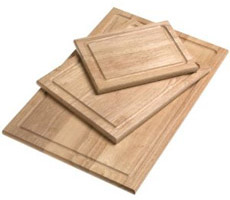|
This week, everyone’s focused on the turkey.
But let us present a crowd pleaser that you can whip up in a jiffy when the turkey’s gone: roast marrow bones.
Marrow bones, you say? Aren’t they a treat for the dog?
Lucky dogs and lucky humans both eat marrow bones. Humans cook them first, and enjoy them on toast points. No less a gourmet than Anthony Bourdain has said that if he could choose his last meal, it would be roast marrow bones.
While we previously thought that bone marrow was pure cholesterol, according to Wikipedia, bone marrow is high in monounsaturated fats that are known to decrease LDL cholesterol levels, resulting in a reduced risk of cardiovascular disease.
It does sounds counter-intuitive! Bone marrow also contains a high proportion of vital nutrients: protein, B complex vitamins, calcium, magnesium and zinc, among others. It was a prized food in hunter-gatherer societies.
How To Serve Roasted Bone Marrow
Serve the bones standing upright on a plate. If you have espresso spoons, they’ll fit more easily inside the bones to scoop out the marrow, which you can then move straight to your mouth. Otherwise, use a dinner knife to spread the marrow on toast.
Another way to serve the bone marrow is as a steak topper. Remove the marrow from the roasted bones and mix it with gremolata, a combination of three minced garlic cloves, 1/4 cup finely chopped parsley and minced lemon peel (remove the peel with a vegetable peeler).
Atop a warm steak, the marrow will melt into the meat and the gremolata will add bright flavors.
Pour some hearty red wine, and you’ll be in heaven.
In addition to buying beef bones for marrow, you should also enjoy the marrow from braised beef shanks. You can enjoy the marrow from any bones. Our dad liked to crunch on chicken bones for the marrow.
Let us know how you enjoy marrow.
|






